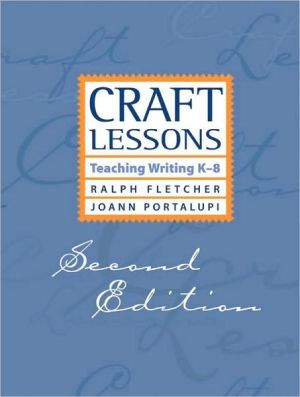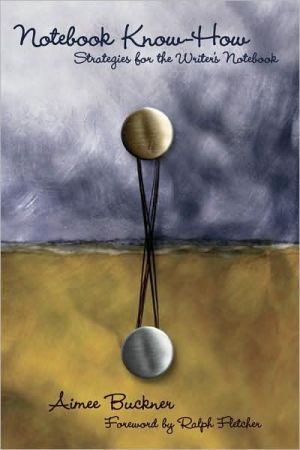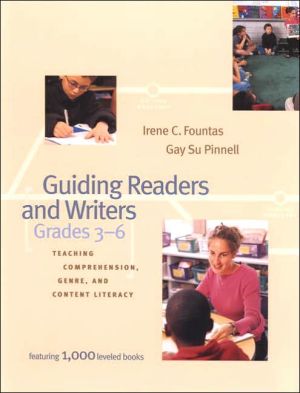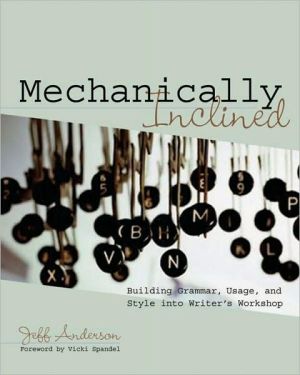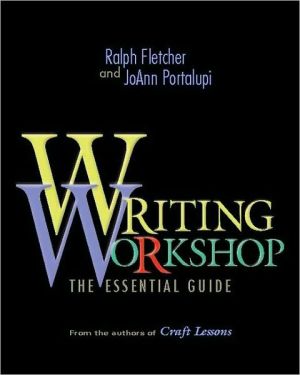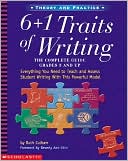Imaginative Writing: The Elements of Craft (Penguin Academics Series)
Search in google:
Written by best-selling author Janet Burroway, Imaginative Writing — an introduction to creative writing — covers all four genres: creative nonfiction, fiction, poetry, and drama. Imaginative Writing discusses elements of craft common to all creative writing before delving into the individual genres. Each of the first five chapters investigates a specific element of craft–Image, Voice, Character, Setting, and Story–from a perspective that crosses all genres. Chapter 6 explores development and revision and serves as a bridge between the craft chapters and genre chapters. The last four chapters examine individual genres: Creative Nonfiction, Fiction, Poetry, and Drama. This unique organization allows students to experiment with creative techniques shared by all genres before deciding which form best suits their imagination. Unique "Try-This" exercises help students develop writing skills, while new “Working Toward a Draft” exercises encourage students to think ahead about the direction and possibilities of their work
* indicate selections new to this edition.Preface to the instructorInvitationto the writer&#lt;blockquote&#gt;You……and writing……and reading……and this book……and your journal……and your workshopI. THE ELEMENTS OF CRAFT&#lt;blockquote&#gt;1. IMAGE&#lt;blockquote&#gt;Image and ImaginationConcrete, Significant DetailsFigures of SpeechREADINGS&#lt;blockquote&#gt;Creative Nonfiction:“The Giant Water Bug” Annie Dillard* “The Ring of Time” E.B WhiteFiction:“The Diamond Mine” Nadine GordimerPoems:“The Hawk in the Rain” Ted Hughes* “Snow Day” Billy Collins“Facing It” Yusef Komunyakaa* “Naming of Parts” Henry ReedDrama:* Her Deer Story Jim Quinn2. VOICE&#lt;blockquote&#gt;Your voicePersonaCharacter VoicePoint of ViewREADINGS&#lt;blockquote&#gt;Creative Nonfiction:* “Beauty: When the Other Dancer is the Self” Alice Walker* “A Note About Allen Tate” Kelly CherryFiction:* “Sitting With the Dead” William TrevorPoems:“Black Hair” Gary Soto* “Ginko Tree” Tom Crawford“Kong Looks Back on His Tryout with the Bears” William Trowbridge“Father” Hilda Raz“The Language of Bees” Barbara HambyDrama:French Fries Jane Martin3. CHARACTER&#lt;blockquote&#gt;As DesireAs ImageAs VoiceAs ActionAs ThoughtAs Presented by The AuthorAs ConflictStock and Flat CharactersREADINGS&#lt;blockquote&#gt;Creative Nonfiction:“The Inheritance of Tools” Scott Russell SandersFiction:* “Interpreter of Maladies” Jhumpa LahiriPoems:“I Knew a Woman” Theodore Roethke“Stonecarver” Carole Simmons Oles* “To Aunt Rose” Allan Ginsberg“One Flesh” Elizabeth Jennings* “Life Cycle of Common Man” Howard NemerovDrama:Brother Mary Gallagher4. SETTING&#lt;blockquote&#gt;As the WorldAs a CameraAs Mood and SymbolAs ActionREADINGS&#lt;blockquote&#gt;Creative Non-Fiction:“At the Dam” Joan Didion* “A Wind From the North” Bill CapossereFiction:“The School” Donald BarthelmePoems:* “At Navajo Monument Valley Tribal School” Sherman Alexie“Earthmoving Malediction” Heather McHugh* “Trials of a Tourist” Anne Tibble“Nude Interrogation” Yusef KomunyakaaDrama:The Philadelphia David Ives5. STORY &#lt;blockquote&#gt;As a JourneyAs a Power StruggleAs Connection/DisconnectionREADINGS&#lt;blockquote&#gt;Creative Nonfiction:“Red Sky in the Morning” Patricia HamplFiction:“Missing” Robert Olen Butler* “The Story” Amy BloomPoems:“A Story About the Body” Robert Haas* “Columbine High School” Albert Goldbarth“Short Story” Ellen Bryant Voigt“Woodchucks” Maxine Kumin“The Hammock” Li-Young LeeDrama:The Battle of Bull Run Always Makes Me Cry Carole Real6. DEVELOPMENT AND REVISION&#lt;blockquote&#gt;Developing a DraftStructuring ResearchRevisionEditingThe WorkshopEXAMPLES &#lt;blockquote&#gt;First and final drafts of "One Art" Elizabeth Bishop The Opening of Indian Dancer: A Revision Narrative Janet Burroway* Growing "Four Tangerines" James KimbrellII. THE GENRES &#lt;blockquote&#gt;7. CREATIVE NONFICTION&#lt;blockquote&#gt;The Essay and Creative NonfictionMemoir and the Personal EssayTechniques of Creative Nonfiction Fact and TruthREADINGS&#lt;blockquote&#gt;“The Female Body” Margaret Atwood* “Do He Have Your Number, Mr. Jeffrey?” Gayle Pemberton* “Interlude” William Kittredge“The Knife” Richard SelzerCreative Nonfiction Format8. FICTION&#lt;blockquote&#gt;Story and PlotScene and SummaryBackstory and FlashbackText and SubtextREADINGS&#lt;blockquote&#gt;“Snow” Charles Baxter* “Story” Lydia Davis* “A Clean, Well-lighted Place” Ernest Hemingway* “Bigfoot Stole My Wife” Ron CarlsonFiction Format9. POETRY &#lt;blockquote&#gt;Free Verse and Formal VerseImagery, Connotation, and MetaphorDensity and IntensityProsody, Rhythm, and RhymeREADINGS&#lt;blockquote&#gt;“Stillborn” Sylvia Plath“The Grammar Lesson” Steve Kowit* “Annus Mirabilis” Philip Larkin* “Fathers” Grace Paley“Black Silhouettes of Shrimpers” Dave Smith* “The Pardon” Richard Wilbur“The Language of the Brag” Sharon Olds“Dream Song 14” John BerrymanPoetry Format10. DRAMA&#lt;blockquote&#gt;The Difference Between Drama and FictionSight: Sets, Action, Costumes, PropsSound: Nonverbal and VerbalSome Notes on ScreenwritingREADINGS&#lt;blockquote&#gt;Duet for Bear and Dog Sybil RosenGas José Rivera* Removing the Head Josh Ben FriedmanEukiah Lanford WilsonDrama FormatAppendix A: Basic ProsodyGlossaryIndex

